Network Digital Nagra Streamer Review
To give Nagra listeners direct access to the new media world, the cult brand is now offering the “Streamer” as an add-on to its DACs. It is as minimalist as it is sophisticated and has two real aces up its sleeve.
In HiFi, you often pay not for what you see but mainly for what you hear. For example, a cartridge can cost just a few dollars or several thousand. Both have diamonds, coils, magnets, and housings, but the sound result from the effort involved makes the difference and ultimately determines the price.
The same goes for the new streamer from the cult brand Nagra, based near Lake Geneva. Although this device is priced at $5,200, making it the most affordable component from the Swiss company at the moment, the question of value immediately arises. What, exactly, justifies the price for a small box just 18.5 cm wide, 4.1 cm high, and 16.6 cm deep, with the brand’s logo engraved on the front?
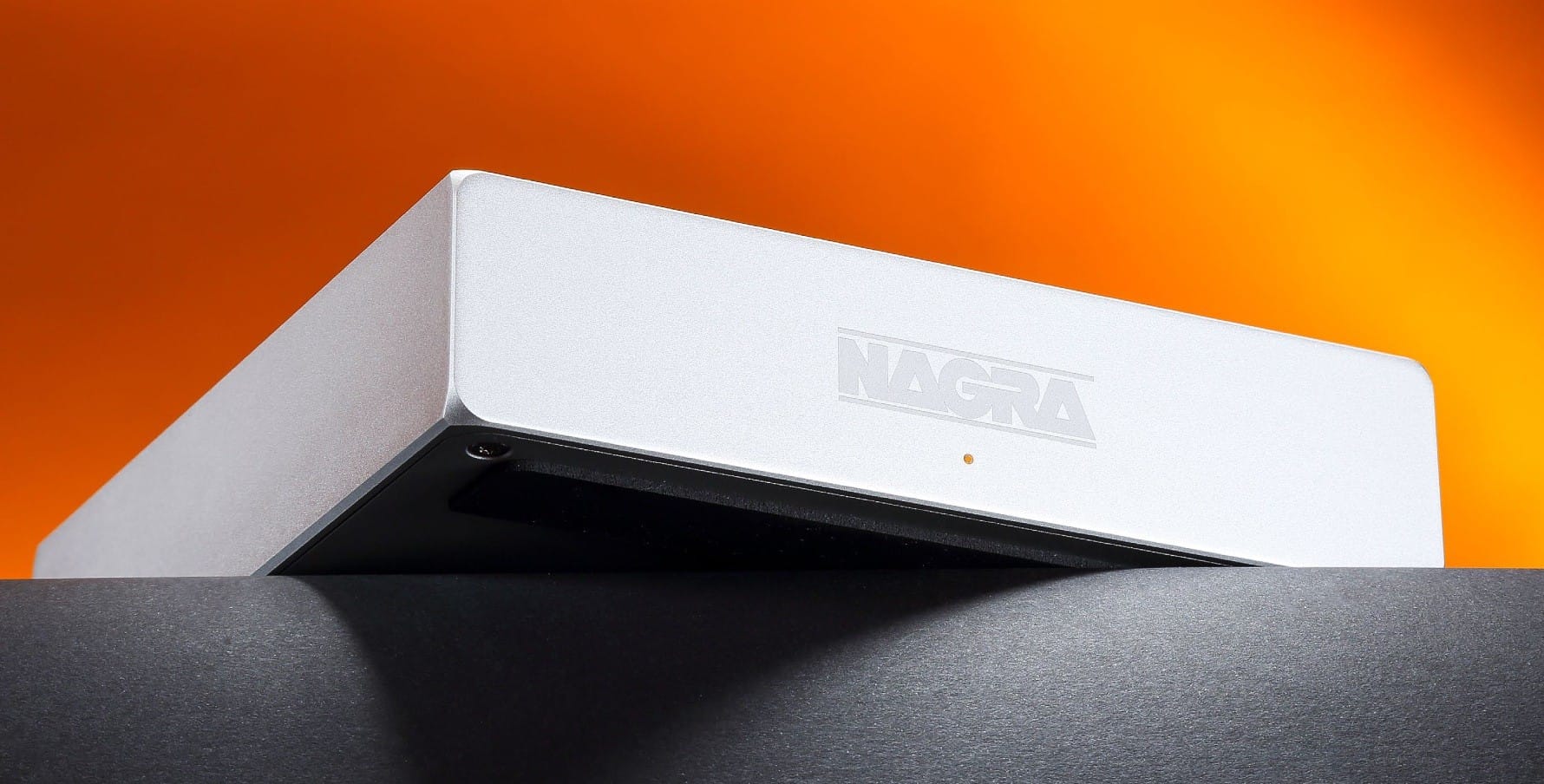
Of course, the precisely crafted lid, milled from a solid block of aluminum, which alone contributes to the total weight of 1.9 kg, is manufactured locally in Romanel-sur-Lausanne and adds to the cost. But surely, the small circuit board inside can’t be the whole story, right? Let’s see what the bottom line is.
The skepticism is valid, especially since Nagra’s compact streamer is a “bridge,” a device without a DAC or analog output stage, designed solely to process digital data from a network or an external USB stick or drive, to be operated with a DAC. While the streamer works with any DAC, it is primarily intended for use with Nagra DACs, such as the Classic DAC MKII, which was tested with excellent results by 7Review. Back then, we noticed two “Nagra Link” inputs for future Swiss digital sources. The new streamer is the first of these.
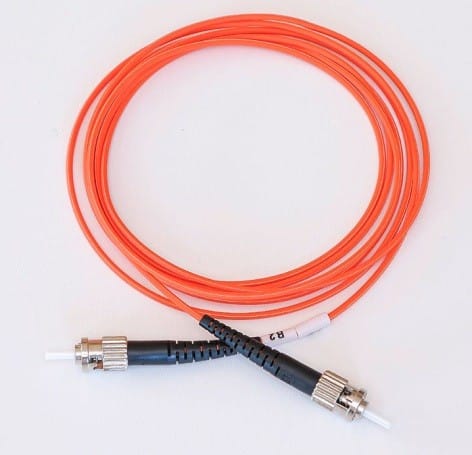
The bridge concept makes sense in a time when a high-end DAC serves as the gatekeeper for many systems. Why should you invest in another DAC or analog output stage with every bit-playing device like a streamer or disc player when the central DAC is of higher quality?
DSD 256 Without Hesitation or Delay
Nagra takes this concept to the extreme, as the streamer, which has no control elements, can even be placed far from the main system. This is made possible by the mentioned Nagra Link, a proprietary optical connection with a special cable, which, according to the Swiss, can be used at almost any length. It is particularly broadband and secures tightly with twistable locking sleeves on the connections.
Owners of a Nagra converter prepared for this, including the Classic DAC II, the HD DAC X, and the Tube DAC, could set up the streamer in their basement, connect it to a router via a high-end LAN cable, and run the orange, flexible N-Link cable 10 or 20 meters to the DAC in the listening room.
Such distances would be risky or ruinously expensive if handled by traditional symmetric or coaxial cables, but Nagra claims the quality of data transmission over even much longer N-Link cables does not suffer. The cost is relatively low: A 10-meter piece would cost around $50, and lengths up to 300 meters are available.
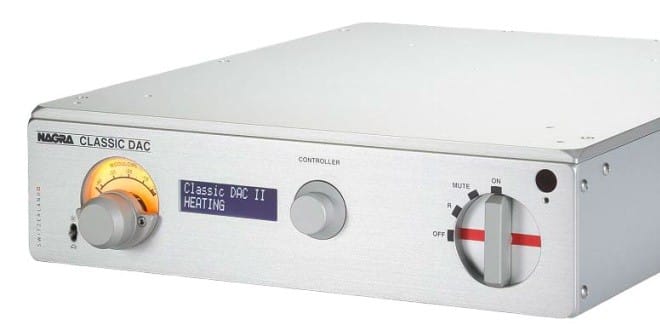
The Nagra streamer does not support WLAN or Bluetooth but offers Apple AirPlay2. Additionally, a USB port is included on the back for external storage media. The standout feature: it can even play Quadruple-DSD files at 11.2 MHz, which is quite rare.
Really? We plugged a regular USB stick into the port, selected the small Nagra as the “server” in the app, opened a folder containing a quadruple-DSD file generated by the Canadian luxury label 2xHD from analog tape, and played it. Without hesitation, delay, or stuttering, the track started playing, delivering a smooth, goosebump-inducing performance by saxophone legend Buddy Tate. The display of the $20,500 Classic DAC II, which we reconnected for this test, confirmed: “DSD 256.” When we tried the same via the coaxial output, the DAC II remained silent because it only supports up to DSD 64 via coax!
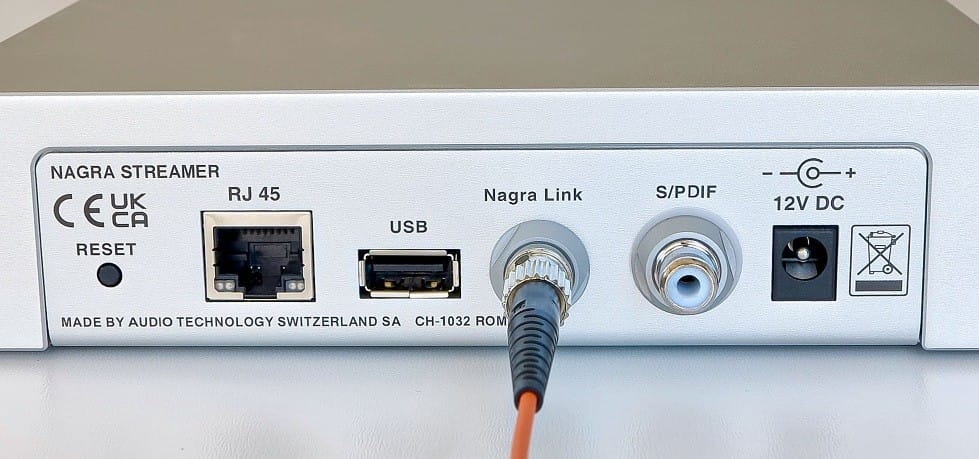
Full Performance via “Nagra Link”
N-Link excels not only in transmitting demanding formats but also in sound quality. Music came through richer, smoother, and more spacious when the data flowed via N-Link. Even the HMS Suprema, a top-tier coaxial connection, couldn’t match it, as we could directly switch between the two cables using the Classic DAC II remote control.
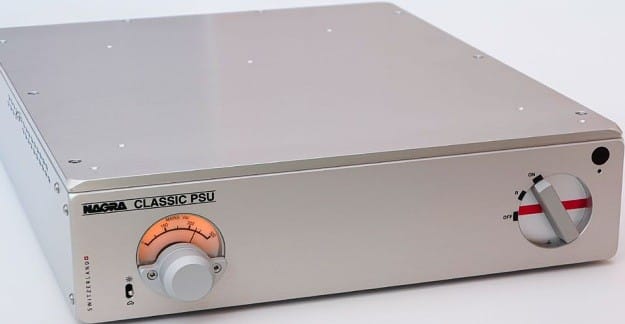
One extreme example with a clear result was Incognito’s “Deep Waters,” a 24-bit/192 kHz live recording from the Hamburg “Jazzport” Festival in 1999. The sound is fresh and rich but quickly becomes harsh and sharp at higher volumes. N-Link immediately reduced these unpleasant effects, making it a real benefit and demonstrating the advantage of optical transmission.
Nagra explains this with the fact that N-Link creates galvanic isolation between the streamer and DAC, preventing interference from the often noisy network environment from reaching the DAC. The LAN port is also filtered by two mini-transformers to shield against high-frequency magnetic fields.
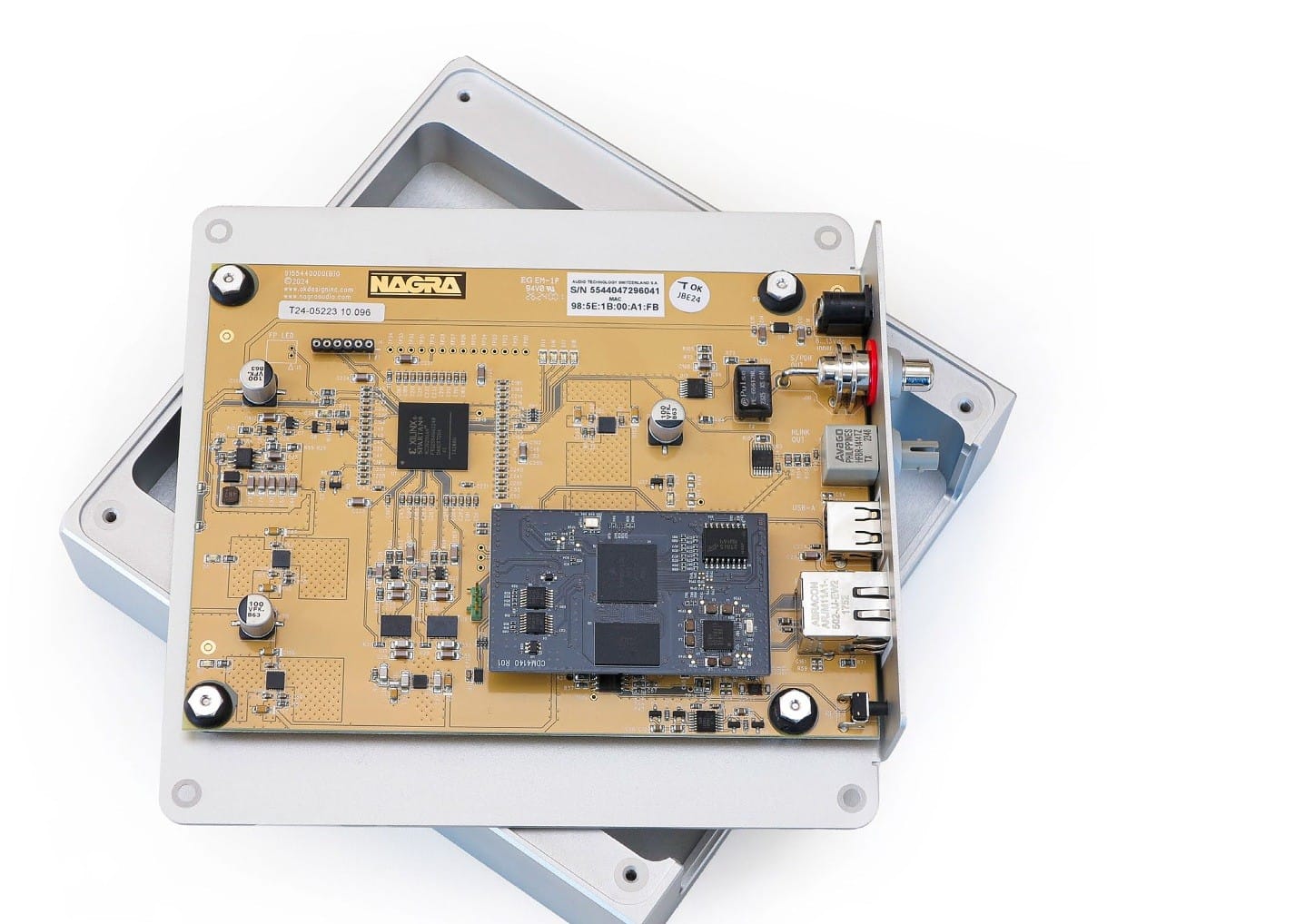
Even Against the “Reference,” It Shines
But how does the Nagra streamer sound? We compared it with Aurender’s highly regarded N10, a bridge device that we still consider a reference in high-quality music data transmission.
We listened to both components with identical files, using direct switching on the Classic DAC II, with the Aurender connected via a balanced HMS Suprema cable, while the Nagra relied on N-Link.


It was a close call! On “I Remember Clifford” by the Beetz Brothers and Hans Dulfer in 24-bit/192 kHz PCM from the first STEREO Phono Festival, the N10 sounded slightly fuller and more powerful. However, the Nagra extracted finer details from the saxophone’s overblown sounds and provided a more three-dimensional and structured presentation. In the end, it was a tie, which we see as a testament to the Nagra streamer’s quality.
We continued with various PCM files, from CD-standard 16/44.1 to 24/192. The Nagra component consistently impressed as a high-quality source for the Classic DAC II, which seemed even more refined than in our earlier tests.
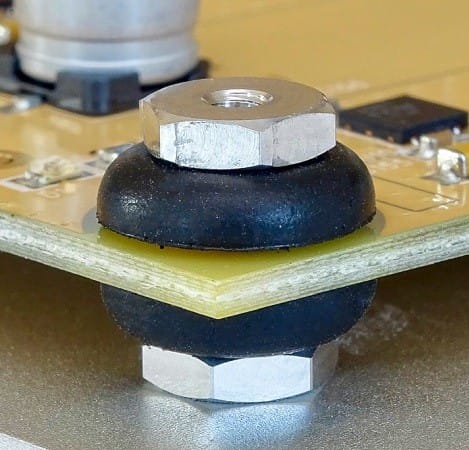
Test Devices:
- Media Player: T+A MP 3100 HV
- Streamer-Bridge: Aurender N10
- Pre-/Power Amplifier: Audio Research REF 6SE / Accustic Arts AMP VI
- Speakers: B&W 801 D4, Wilson Audio The WATT/Puppy
- Cables: HMS Suprema (NF, LS, digital, power), In-Akustik 2405 AIR (NF, LS)
Control via Freeware App
Throughout the tests, we used the “MConnect Control” app for operation, as Nagra does not provide its own software. Given the price, this might be seen as a downside, but for users looking for straightforward music playback and playlist creation, MConnect is likely sufficient.
For high-end users with expensive Nagra setups, the streamer is also “Roon-ready.” The outstanding music data service has just been enabled for the streamer, with shipped units updatable online, making Roon the go-to for these listeners.
These users may also be interested in the fact that the streamer, powered by a 12-volt external power supply, can be connected to Nagra’s premium power supplies using a special Lemo-to-DC cable costing around $370. While no one would buy this exclusively for the streamer, existing Nagra power supplies with available outputs can improve its performance significantly.
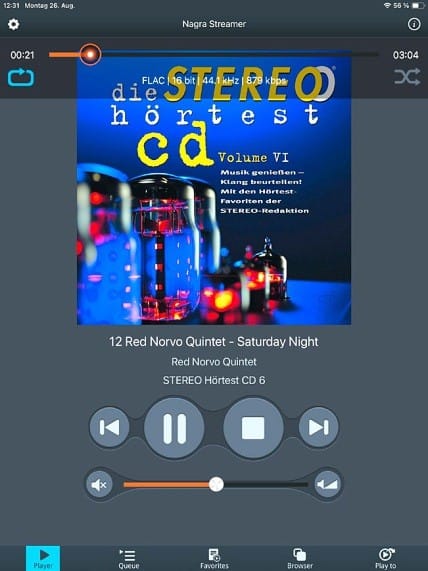
Using the $15,200 Classic PSU, the presentation gained energy, power, and spaciousness. Maria Pihl’s “Malvina” sounded bigger, deeper, and more vibrant. Of course, the Classic DAC II also benefited similarly from this premium power source.
Aside from N-Link, this showed how seamlessly the streamer integrates into the Nagra system, for which it was designed. It can work with other brands and still deliver top-notch sound, but it’s truly maximized within the Nagra ecosystem. For this purpose, it’s the best in its class and a fantastic little box!
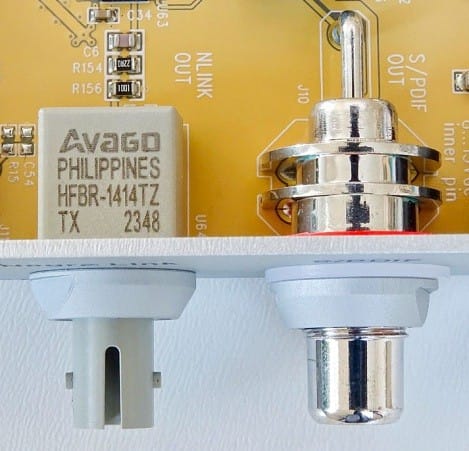
Nagra Streamer Tech Specs
- Product / Price Range: Streaming Bridge / $2,100 to $5,300
- Website: www.nagraaudio.com
- Price: $5,200
- Dimensions (W x H x D in cm): 18.5 x 4.1 x 16.6
- Weight (in kg): 1.9
Verdict
SOUND QUALITY (35% weight)
- Sound Quality: Very good (1.2 on a 10-point scale, 9.8/10)
“Excellent sound quality in every aspect, especially over Nagra-Link, with further improvement possible through Classic PSU.”
MEASUREMENTS (30% weight)
- Digital Inputs/Outputs: Inputs: LAN / USB, Outputs: Coaxial / Nagra-Link
- Supported Formats: PCM up to 32-bit / 384 kHz, DSD up to 256
- Build and Materials: Very good
HANDLING (30% weight)
- Remote Control Quality: No remote control
- Manual Quality: Detailed, but only in English
- Operation/Display: No control elements or display
- App Quality: MConnect Control is practical and reliable
SERVICE & ENVIRONMENT (5% weight)
- Warranty (in years): 3
- Power Consumption (Standby / Idle in watts): 6.7 W
- Hard Power Switch: No
Overall Test Result:
- Rating: Good (2.3 on a 10-point scale, around 7.7/10)



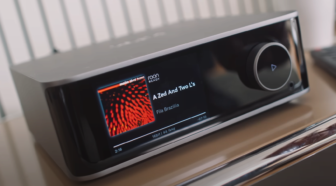
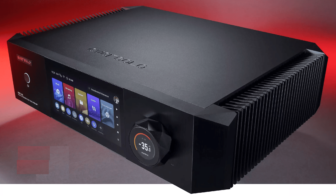
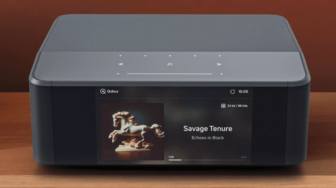

im not a Nagra fanboy, and this is my first time reading your reviews….but it seems to me you could have attached the Nagra streamer to a non Nagra DAC too for a more comprehensive review ( i know that NAGRA primarily created thsi streamer for NAGRA DAC’s but price wise it makes an interesting alternative for other DAC brands) . Also I think if you are only giving “Sound” a 35% weighting you dont trust your ears and evaluation method enough. One more thing…you describe yourself as “Founded in July 2014, 7Review is a free audio resource for Beginners.”…..beginners would buy NAGRA? that’s some high end gear